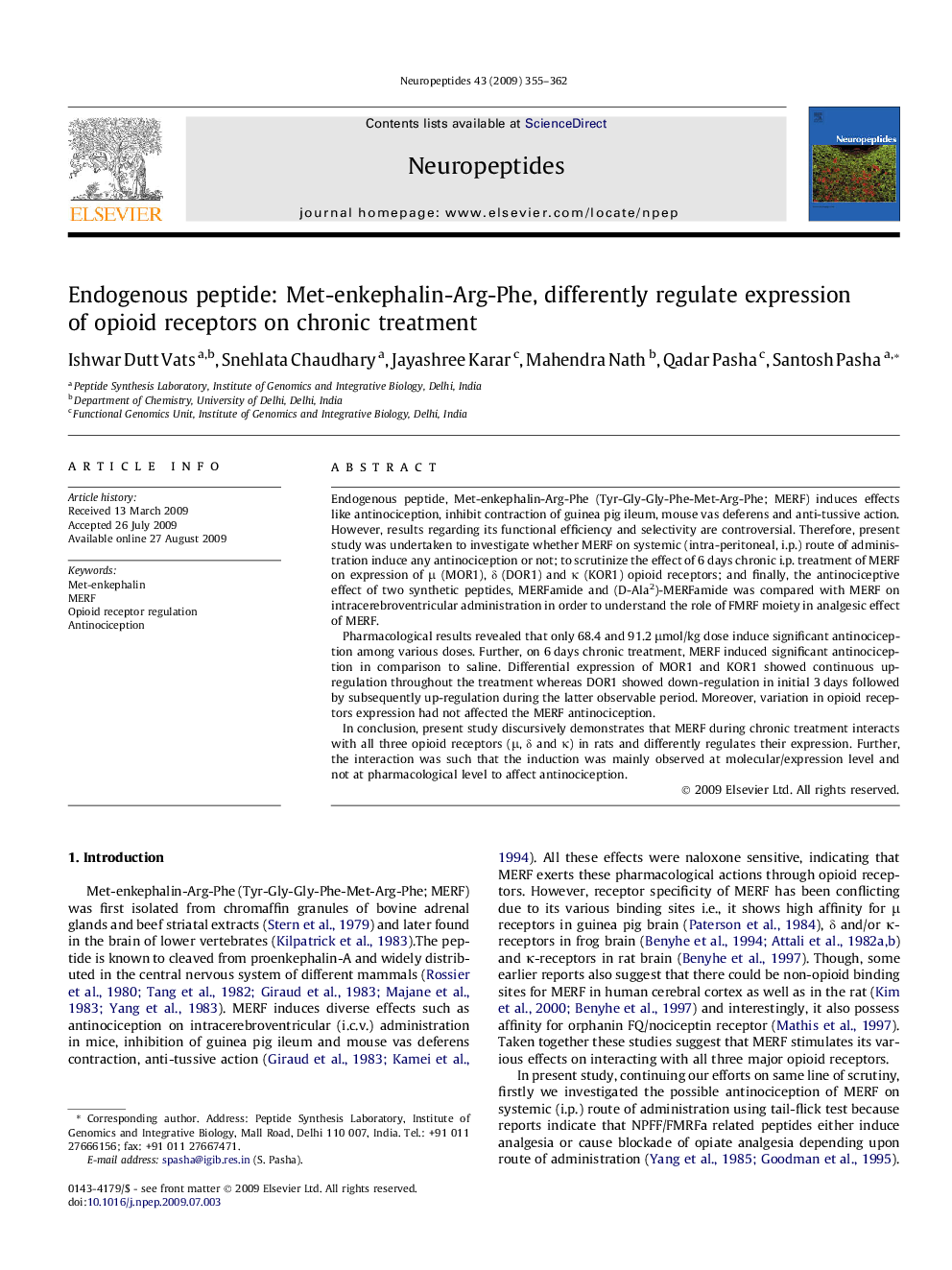| Article ID | Journal | Published Year | Pages | File Type |
|---|---|---|---|---|
| 2808567 | Neuropeptides | 2009 | 8 Pages |
Endogenous peptide, Met-enkephalin-Arg-Phe (Tyr-Gly-Gly-Phe-Met-Arg-Phe; MERF) induces effects like antinociception, inhibit contraction of guinea pig ileum, mouse vas deferens and anti-tussive action. However, results regarding its functional efficiency and selectivity are controversial. Therefore, present study was undertaken to investigate whether MERF on systemic (intra-peritoneal, i.p.) route of administration induce any antinociception or not; to scrutinize the effect of 6 days chronic i.p. treatment of MERF on expression of μ (MOR1), δ (DOR1) and κ (KOR1) opioid receptors; and finally, the antinociceptive effect of two synthetic peptides, MERFamide and (D-Ala2)-MERFamide was compared with MERF on intracerebroventricular administration in order to understand the role of FMRF moiety in analgesic effect of MERF.Pharmacological results revealed that only 68.4 and 91.2 μmol/kg dose induce significant antinociception among various doses. Further, on 6 days chronic treatment, MERF induced significant antinociception in comparison to saline. Differential expression of MOR1 and KOR1 showed continuous up-regulation throughout the treatment whereas DOR1 showed down-regulation in initial 3 days followed by subsequently up-regulation during the latter observable period. Moreover, variation in opioid receptors expression had not affected the MERF antinociception.In conclusion, present study discursively demonstrates that MERF during chronic treatment interacts with all three opioid receptors (μ, δ and κ) in rats and differently regulates their expression. Further, the interaction was such that the induction was mainly observed at molecular/expression level and not at pharmacological level to affect antinociception.
